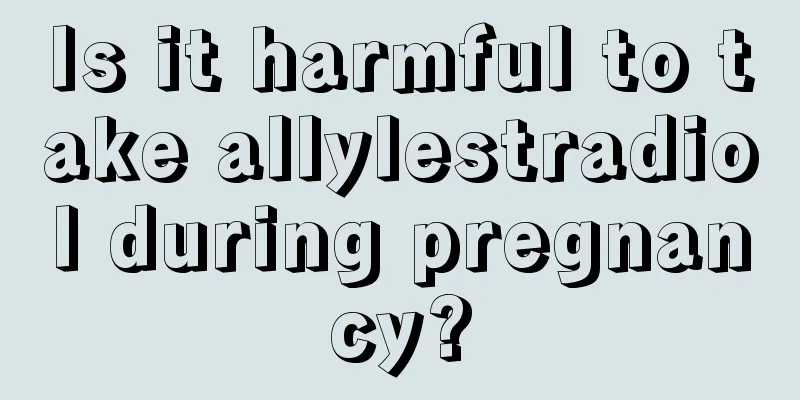Is it harmful to take allylestradiol during pregnancy?

|
Allylestradiol can promote the secretion of endogenous progesterone, stimulate poorly functioning embryos, and polarize the placental function world. Therefore, it is harmless to take it under the guidance of a doctor. Allylestradiol was originally used to treat threatened abortion. It can effectively increase the body's hcg specificity and promote the secretion of body progesterone and human chorionic gonadotropin. It has a very good therapeutic effect on the treatment of threatened abortion caused by low progesterone or low human chorionic gonadotropin levels in early pregnancy. For example, if there are changes in female hormones in the body in early pregnancy, causing abnormal uterine contractions, they can be controlled by using allylestradiol. For pregnant women with symptoms of threatened abortion, they can use medication to maintain the fetus under the guidance of a doctor. It should be noted that if the pregnant woman has severe liver and kidney dysfunction, or has a history of gestational herpes and preeclampsia, she needs to inform the doctor. There is no harm in taking allylestradiol after pregnancy. Allylestradiol is mainly used to treat threatened abortion, threatened labor or habitual abortion, and can be used to maintain the fetus. Generally, you can increase the dosage from 1 tablet to 3 tablets a day and continue taking the medicine for 5-7 days or stop taking the medicine when the symptoms of vaginal bleeding and lumbar pain subside. The actual dosage should be determined based on the severity of the patient's clinical manifestations. For mild cases, 1 tablet can be used, and for severe cases, 3 tablets can be taken. Especially for patients with habitual miscarriage, allylestradiol can be used immediately after pregnancy. If a woman experiences threatened miscarriage in early pregnancy and takes allylestradiol for tocolysis treatment, she should generally take the drug for about 5 to 7 days, or until the symptoms completely subside. If a woman has had recurrent miscarriages in the past, then after being diagnosed with pregnancy, regardless of whether there are signs of threatened miscarriage such as abdominal pain and vaginal bleeding, she should immediately start taking allylestradiol for tocolysis, and usually needs to be taken until about the fifth month of pregnancy. For women with threatened labor, allylestradiol can be taken tocolytically protect the fetus. It should be taken for more than 7 days until there is no obvious uterine contraction and then the dosage can be gradually reduced. |
<<: Why do finger joints hurt during confinement?
>>: What causes varicose veins during pregnancy?
Recommend
Why do women always feel sleepy?
Some experts say that one-third of a person's...
Postventricular hemorrhage
Some women experience vaginal bleeding after havi...
What is the best way to treat uterine adhesions?
The application of hysteroscopy in clinical medic...
Let me tell you a secret: cirrhosis is so terrible because of 4 aspects!
The first aspect: cirrhosis is an irreversible pa...
What to do if your vagina is itchy at night
Because people's minds are open now, most wom...
Do your skin get drier the more you take showers in winter? Save this "skin care strategy"!
In winter, the temperature is low and the weather...
Is your child's myopia increasing rapidly? Maybe you didn't choose the right glasses! Parents must read these 3 points!
Before the age of thirteen, it is an important st...
What are the symptoms of immune infertility?
Generally speaking, immune infertility does not s...
What are the early symptoms of breast cancer?
Breast cancer is a malignant tumor that occurs in...
The accuracy rate of negative test result after 16 days of sexual intercourse
Once a woman is pregnant, she can use an early pr...
What to do if your face has large pores, blackheads and excess oil?
Nowadays, many girls are troubled by their enlarg...
I get hungry as soon as night falls and crave food. Is there any help?
Many people have experienced being hungry at nigh...
What is the most impractical and wasteful part of decoration? What is unnecessary in decoration?
We all know that when decorating a house, there a...
What is the reason for fetal arrest before the full term of pregnancy?
Pregnancy for 10 months is a very difficult proce...









